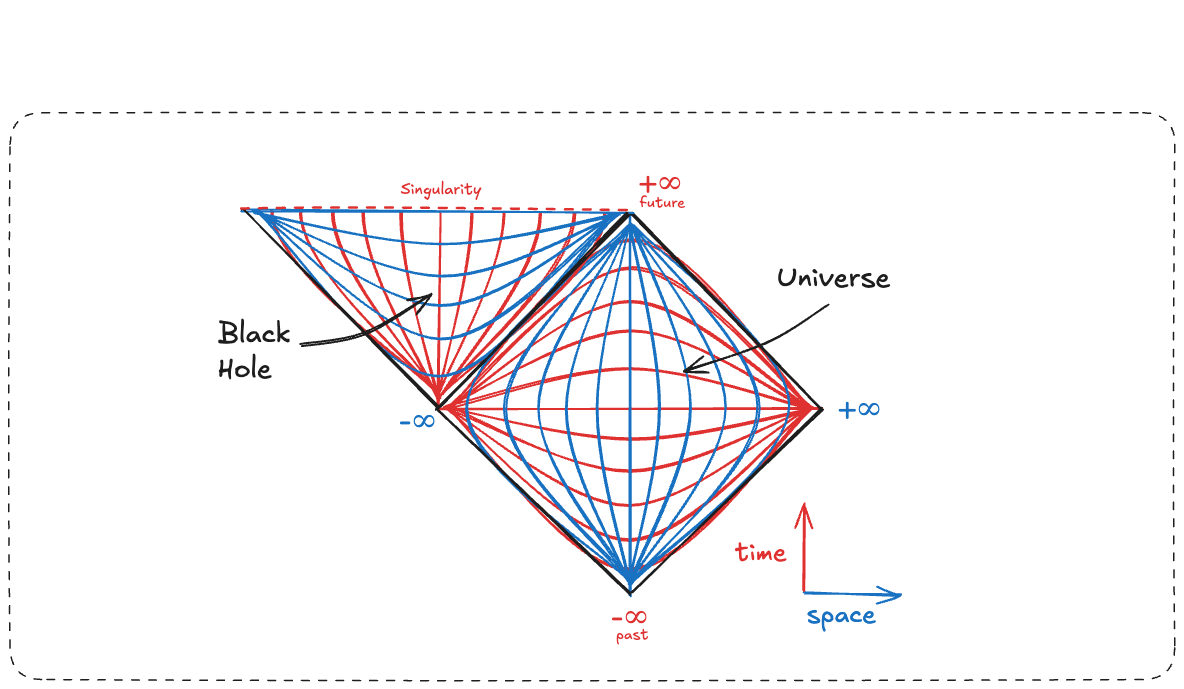A black hole singularity is not an infinitely dense point at it’s center - it is an inevitable event in the future.
Related:
The “Hole”
The singularity inside of a black hole is misrepresented in our minds - we have all seen these types of images which show it as an infinitely dense point at the center, curving space time down.
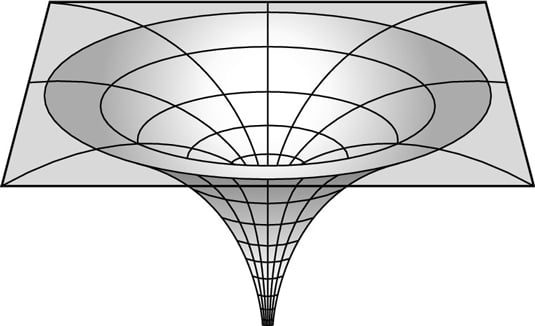
While this is intuitive, the reality is much stranger. I’d like to create some better diagrams to understand what happens beyond the event horizon.
Visualizing curved spacetime
Lets try visualizing this is a more intuitive way, we will take the perspective of an astronaut falling towards the singularity.
Firstly, in order to draw diagrams, we will again be using 1 dimension of space and 1 dimension of time.
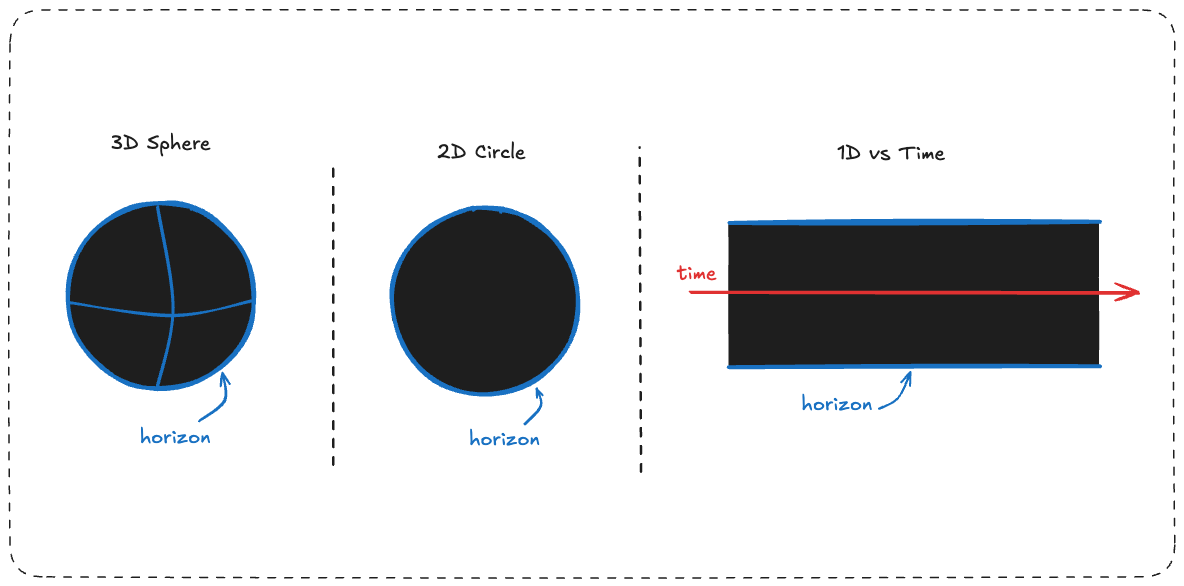
To understand, just imagine looking at a circle on it’s edge, evolving through time - like a flipbook. The black rectangle represents the cross section of this cylinder through spacetime.
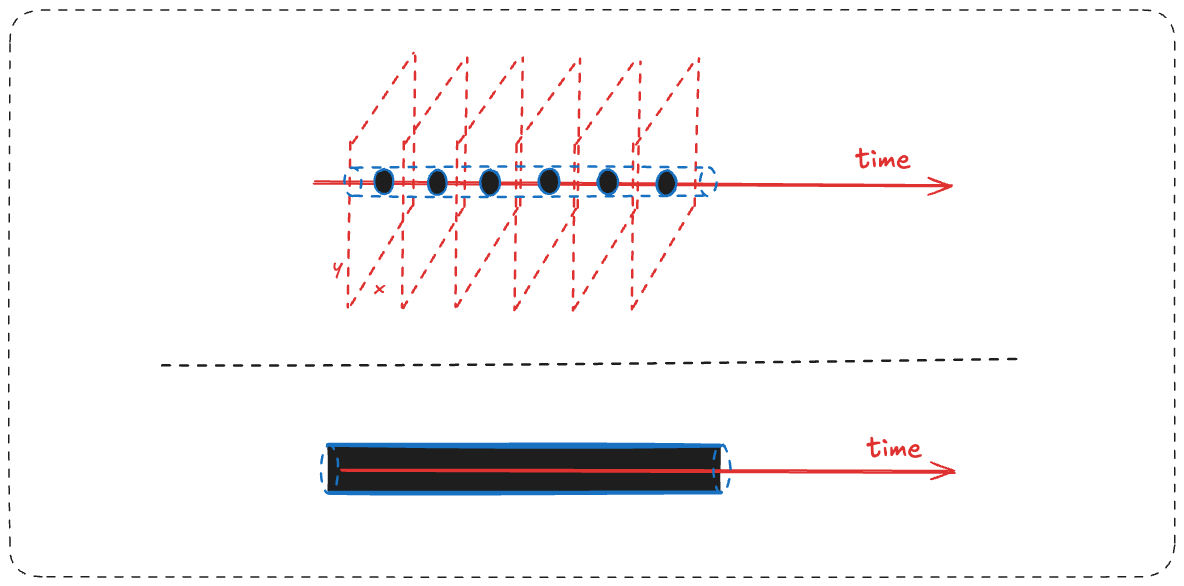
The singularity, as it exists at the center of the circle, also exists at the center of this “tube” as a line.
We can now, through this lens, look at curvatures in spacetime. Lets start with completely flat spacetime.
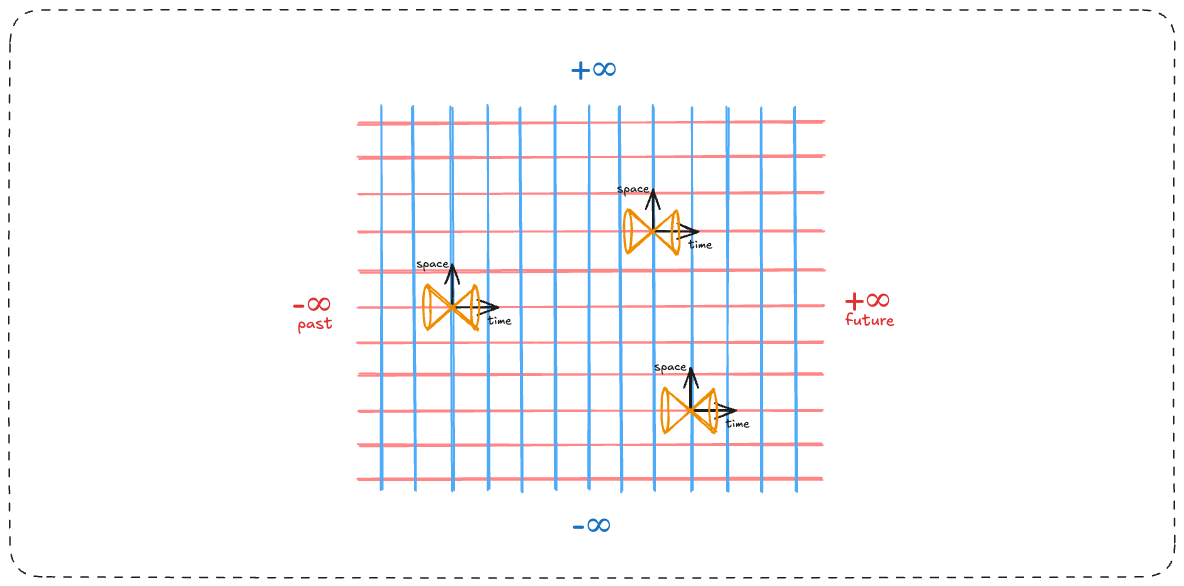
In flat spacetime, all orientations of space and time are exactly the same. The Light Cones, which determine causality, are all oriented with their edges at exactly 45 degrees.
However, this is not the behavior of our universe. Through General Relativity, we know that objects of large mass curve spacetime towards them. Let’s add a massive object, like the earth, into our scene.
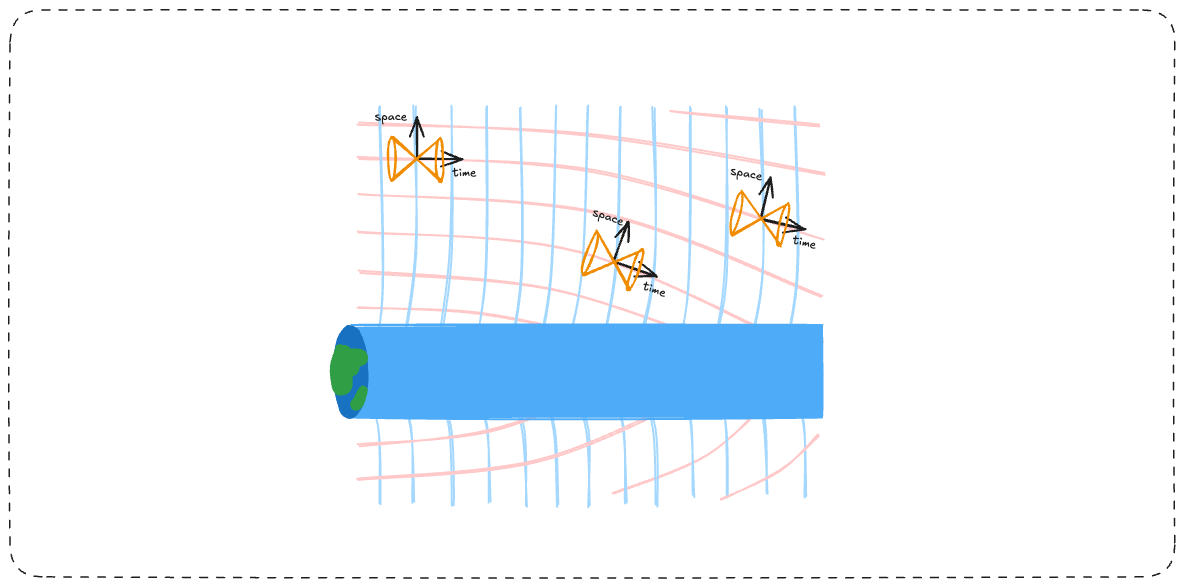
The orientation of space and time is relative to your position in the universe.
The more massive the object, the more it bends spacetime towards it.
This is Gravity - a bending of spacetime towards massive objects. Because spacial and temporal speeds are linked, this curvature in time is expressed as an acceleration through space, by tracing the geodesic towards the center.
There exists an object that is so massive while also being small enough whereby it curves spacetime in such an extreme way that below a certain distance, all Light Cones point downwards.
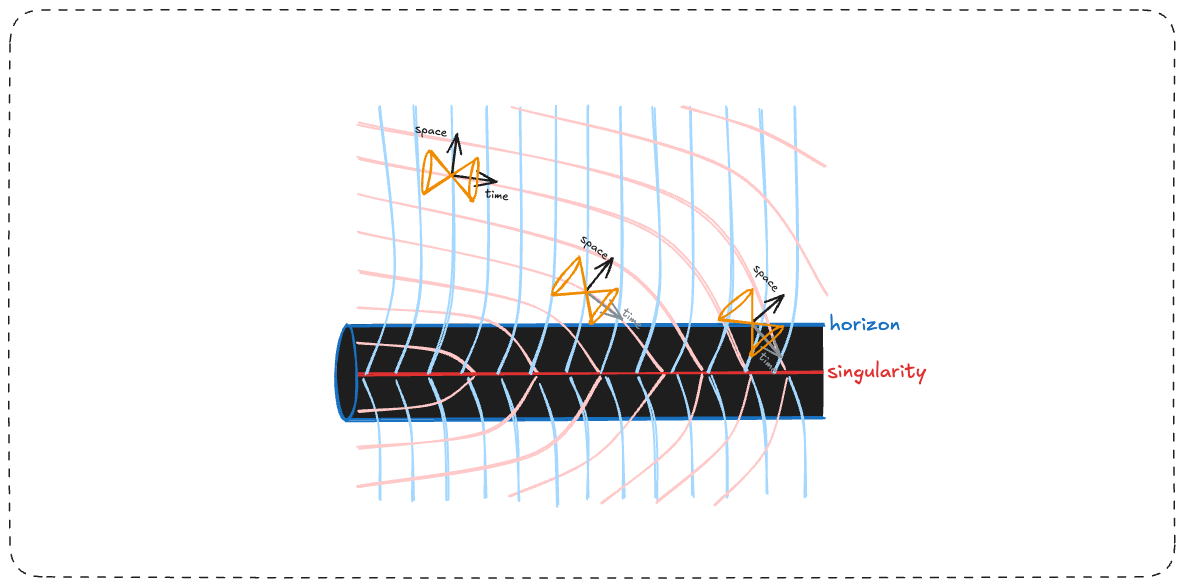
This is the event horizon of black hole, a boundary where the curvature of spacetime exceeds 45 degrees. Where a light cone has no other path than to continue to it’s center - and thus can never escape.
But notice that it is not the spacial dimension that is pointing towards the singularity - but the time dimension.
Beyond the Horizon
Let’s follow the perspective of an astronaut falling past the horizon. We will stay oriented to their inertial frame of space and time.
Outside of the black hole, their light cone expresses free paths through space, they can navigate any world line within the cone. Their cone operates in this same way throughout the following experience, all that changes is what the cone encompasses.
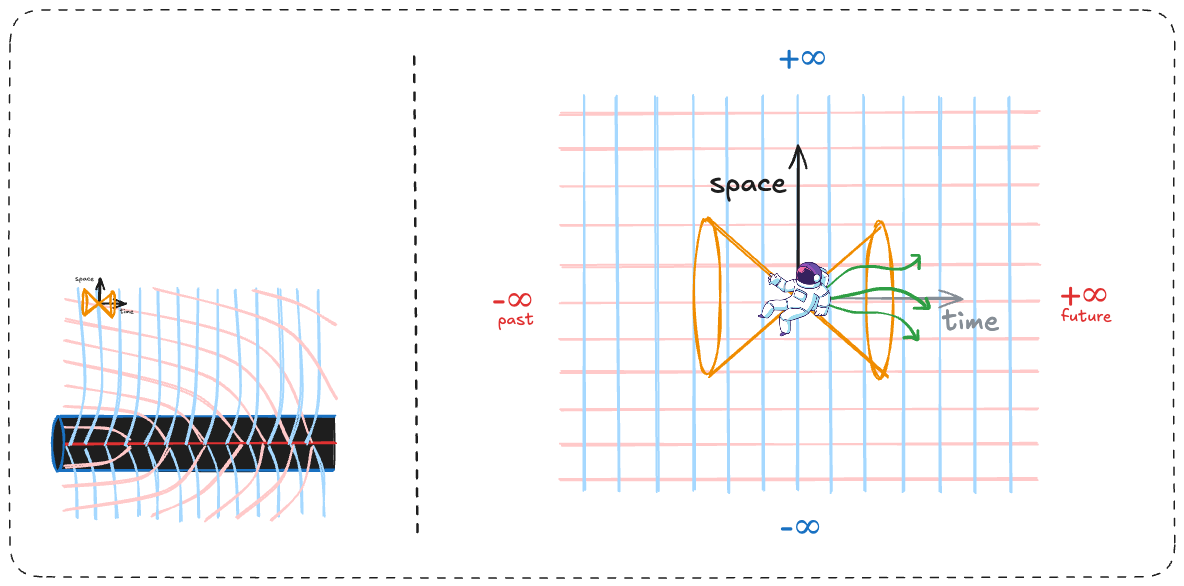
As they get near the horizon, the curvature of spacetime causes a larger and larger part of their light cone to dip beneath the horizon. However, parts of it are still outside, meaning the astronaut could still escape.

Once they reach the horizon, the horizon itself now behaves like the boundary of their light cone. They no longer have any possible paths that return back outside.
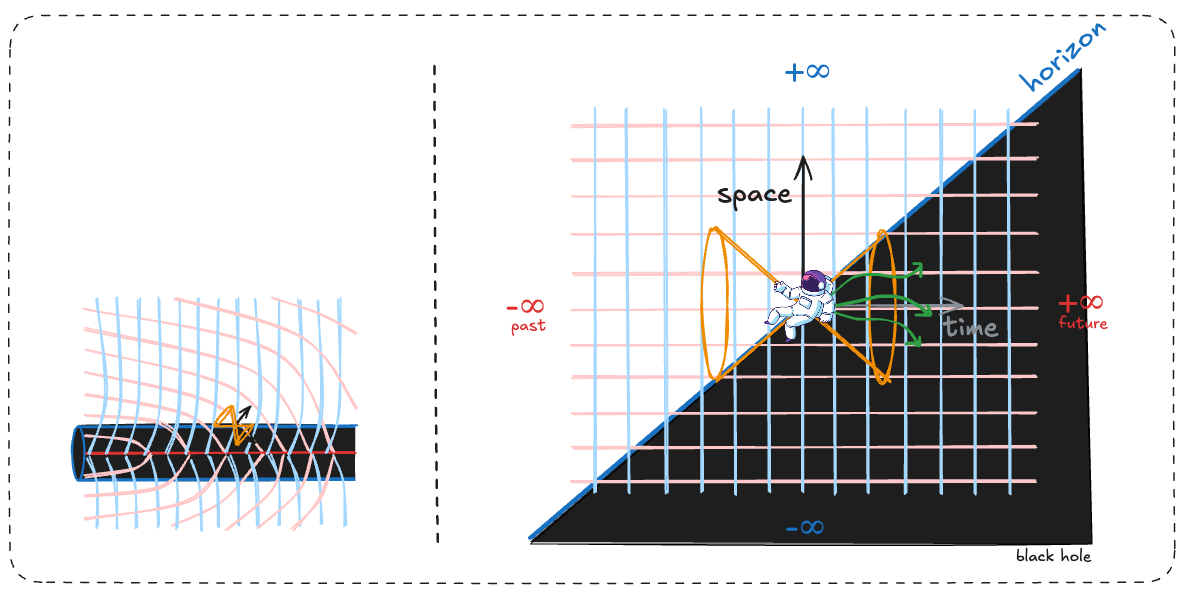
Their notion of space and time is now oriented at 45 degrees. Continuing further into the black hole, we can see the unintuitive nature of the singularity.
The event horizon isn’t just the boundary where light can no longer escape, it is a threshold where the relative orientation of space and time swap places.
As the curvature continues to get more extreme closer to the center, it curves past 45 degrees.
The astronaut’s dimension of time is now pointing downwards, in the dimension space used to be pointing.
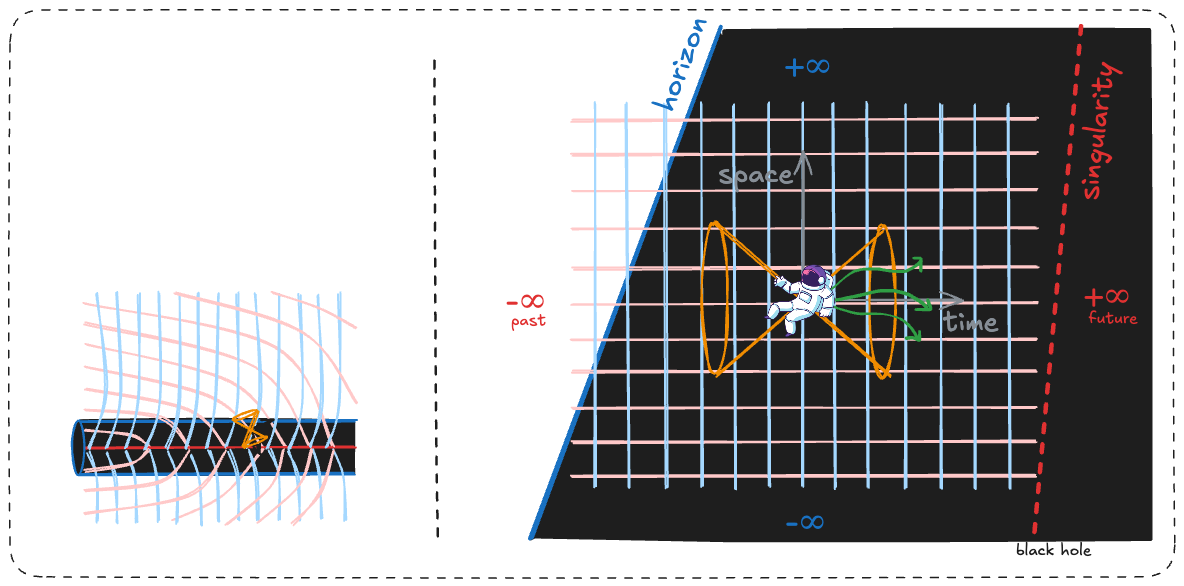
The horizon is no longer a boundary in space, it is an event in their past — and the singularity is now an unavoidable event in the future.
It isn’t an infinitely small point in space, it spans all of space at inside of the black hole - as all of space eventually meets it. It is more like a wall in time than anything else.
Static Light Cone
We can now understand that the horizon of a black hole is itself a light cone, the boundary of which is made static by the curvature of space.
As the bubble of light expands outwards, there is an exact point at which the curvature of spacetime is falling inwards at the same speed.
We can include this on our diagram, to show the formation of the black hole.
As light moves outward, curved spacetime moves inwards, and the boundary stays motionless.
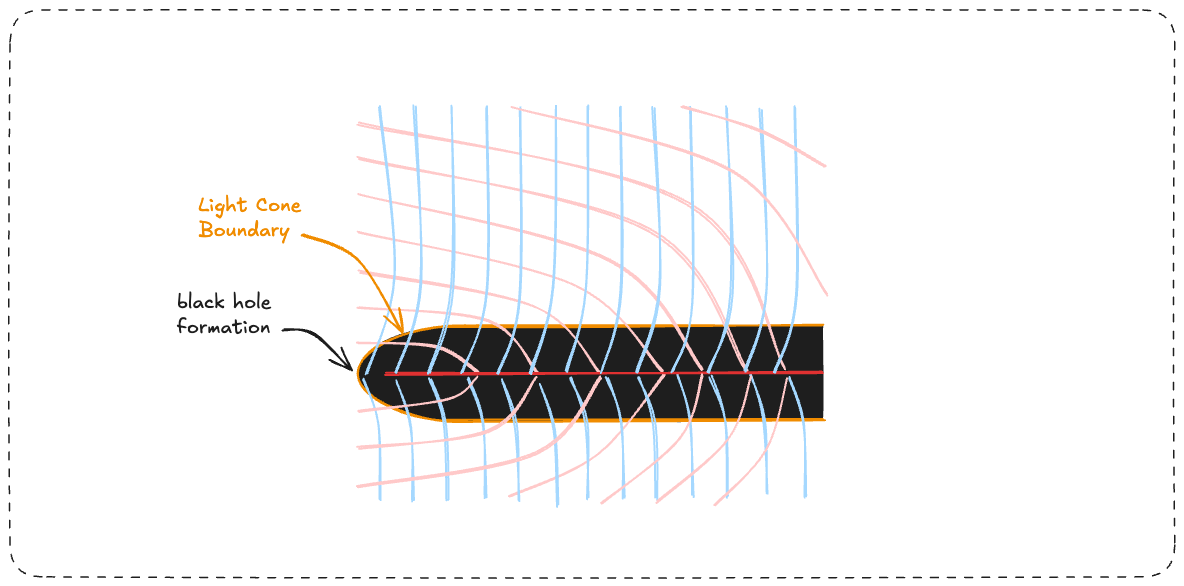
Now we’ll apply one last transformation, and straighten the curvature in space to better see the nature of a black hole from it’s relative frame.
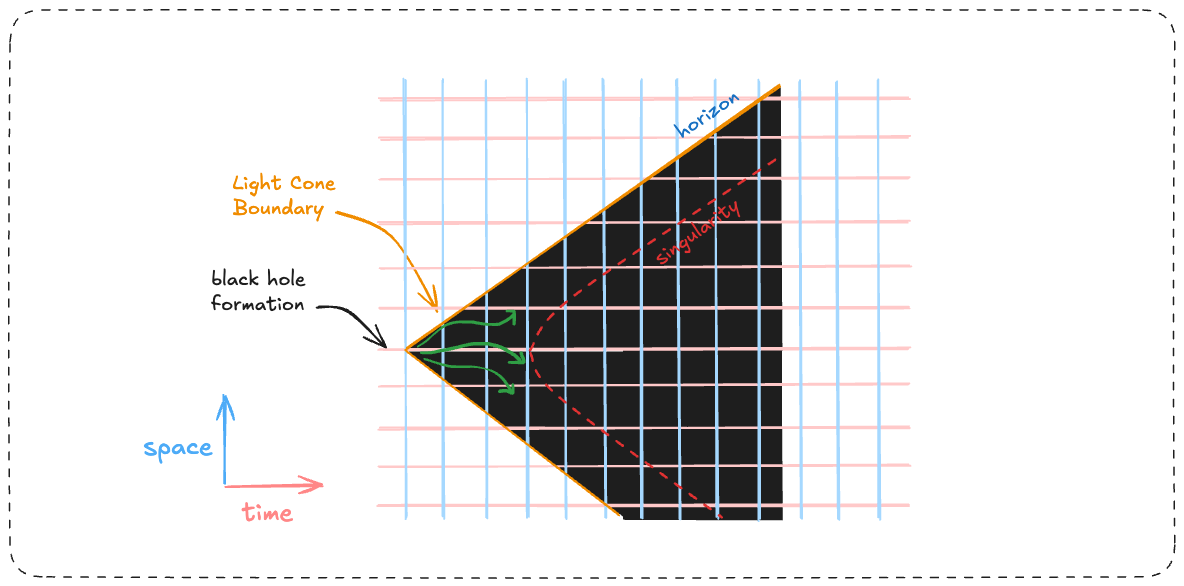
This is the true shape of a black hole - a light cone, its edges at 45 degrees - within which all possible futures eventually end at the singularity.
We can now see how the singularity is en event in time, not a point in space.
The natural question now appears: what happens beyond the singularity?
What happens to the right of that red dashed line?
Unfortunately nobody knows - all physics break down completely at that point.
Penrose Diagrams
Penrose Diagrams
Roger Penrose thought of visualizing this a while ago, and created The Penrose Diagram to compactly spacetime to understand the horizon of black holes.
Let’s relook at a Penrose diagram for the universe
Remember, this is a compactification of all of time and all of space (in 1 dimension). So where would a black hole be on this diagram?
The black hole exists as a sort of parallel universe, since there can be no reverse causal relationships. You can only go in, not out.
The singularity sits at in the future, not in space. It instead encompasses all space inside the black hole at a point in the future. This happens because at the horizon, spacetime curvature causes space and time to swap.

